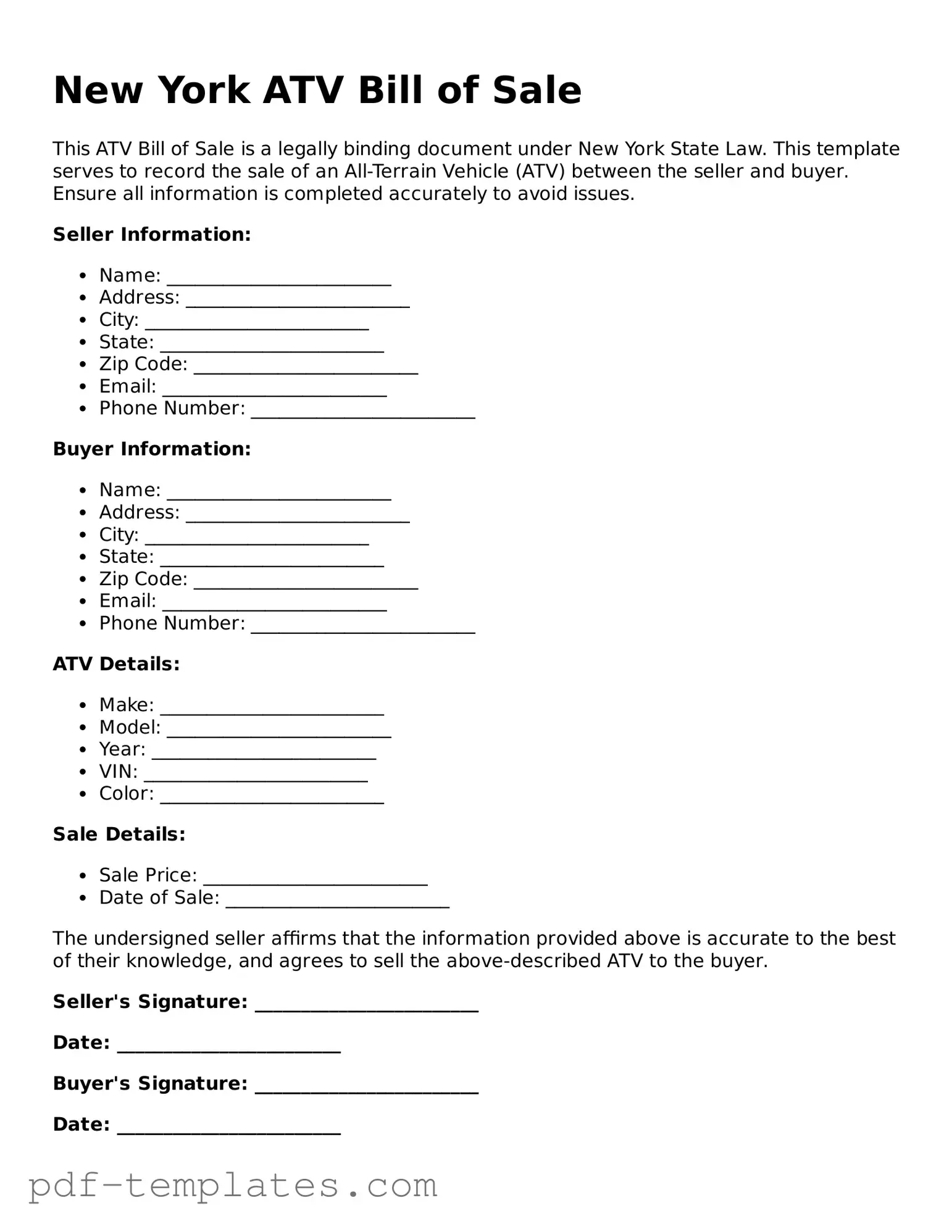Official ATV Bill of Sale Template for New York State
The New York ATV Bill of Sale form is a legal document that records the transfer of ownership of an all-terrain vehicle (ATV) from one party to another. This form serves as proof of the sale and includes essential details such as the buyer's and seller's information, the ATV's description, and the sale price. Ensuring this document is completed accurately is crucial for both parties involved in the transaction.
Ready to complete your ATV sale? Fill out the form by clicking the button below.
Customize Form Now
